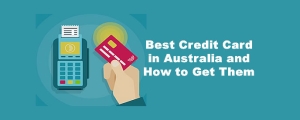
The digital era has made it possible for anyone with a laptop and internet connection to start an online business — even without owning physical products. One of the most popular and profitable ways to do this is through dropshipping.
The dropshipping business model allows you to sell products online without stocking or handling them yourself. You act as the middleman between suppliers and customers. When someone buys from your online store, your supplier ships the product directly to the buyer.
It’s a low-risk, low-investment way to enter e-commerce. In this article, we’ll break down what dropshipping is, how it works, the steps to start, and the keys to building a successful and sustainable business.
1. What Is Dropshipping?
Dropshipping is a business model where an online retailer sells products without keeping them in stock. Instead, when a customer places an order, the retailer forwards the order details to a supplier or manufacturer who fulfills the order by shipping the product directly to the customer.
In short:
You list and promote products online.
The customer pays you retail price.
You pay the supplier the wholesale price.
The supplier ships the item to your customer.
You keep the profit (the difference between retail and wholesale price).
This model eliminates the need for:
- Owning a warehouse.
- Managing inventory.
- Handling packaging or shipping.
2. How Dropshipping Works (Step-by-Step)
Here’s a simple breakdown of how the dropshipping process works:
- Customer Orders a Product
- A customer visits your online store and places an order for a product.
- You Receive the Order and Payment
- The customer pays the retail price on your website.
- You Forward the Order to Your Supplier
- You send the order details (product, quantity, shipping address) to your supplier and pay the wholesale price.
- Supplier Ships the Product
- The supplier packages and ships the product directly to your customer often using your brand name on the packaging.
- You Earn the Profit
- The profit is the difference between what your customer paid and what you paid your supplier.
3. Advantages of the Dropshipping Model
The dropshipping model offers several advantages, especially for new entrepreneurs or those with limited startup capital.
a. Low Startup Costs
You don’t need to invest heavily in inventory or rent storage space. You can start your online store with just a website, supplier connection, and some marketing budget.
b. Minimal Risk
Since you don’t buy products upfront, there’s no risk of unsold stock. You only pay for items that have already been purchased by customers.
c. Easy to Start
You don’t need advanced technical or business experience to begin. Platforms like Shopify, WooCommerce, and Wix make it easy to set up a professional online store.
d. Flexible Location
You can run a dropshipping business from anywhere in the world — as long as you have internet access and can communicate with customers and suppliers.
e. Wide Product Selection
You can offer hundreds or even thousands of products without worrying about inventory space. Simply import product listings from suppliers.
4. Challenges of Dropshipping
Like every business model, dropshipping comes with its challenges. Knowing them will help you prepare and plan effectively.
a. Low Profit Margins
Because dropshipping is competitive, many sellers offer similar products at low prices. To stand out, you’ll need strong marketing and branding strategies.
b. Supplier Issues
If your supplier makes mistakes — such as sending the wrong product or delaying shipment — your business reputation suffers. Reliable suppliers are crucial.
c. Inventory Syncing
Since you don’t control inventory, you may face problems if a supplier runs out of stock. It’s important to use systems that update product availability in real time.
d. Quality Control
You don’t handle the products directly, so ensuring consistent product quality can be tricky. Always test sample orders before listing products.
e. Customer Service
When things go wrong, customers contact you — not the supplier. You must be ready to manage complaints and refunds professionally.
5. How to Start a Dropshipping Business (Step-by-Step)
Starting a dropshipping business is simple when you follow the right steps.
Step 1: Choose a Niche
A niche is a specific product category or target market. Choosing the right niche is the foundation of your business.
Tips for Choosing a Profitable Niche:
Focus on products people buy frequently or emotionally (e.g., fashion, fitness, beauty, gadgets).
Avoid overly competitive categories unless you can offer unique branding.
Check trending products on platforms like Google Trends, AliExpress, or TikTok.
Step 2: Find Reliable Suppliers
Your suppliers are the backbone of your dropshipping business. Popular options include:
- AliExpress (global)
- CJ Dropshipping
- Spocket
- SaleHoo
- Zendrop
Tips for Choosing Suppliers:
Look for good reviews and fast shipping times.
Order sample products to test quality.
Choose suppliers who offer tracking numbers and returns support.
Step 3: Build Your Online Store
You need a website to display products and process orders. Popular platforms include:
Shopify – beginner-friendly with dropshipping apps like Oberlo or DSers.
WooCommerce flexible option for WordPress users.
Wix or BigCommerce – user-friendly and customizable.
Essentials for Your Store:
Attractive homepage and logo
Product pages with clear descriptions and images
Payment gateway (Paystack, PayPal, Stripe, etc.)
Shipping and return policy
Step 4: Add Products
Import products from your supplier to your store using apps like DSers, Oberlo, or Spocket.
Edit titles, descriptions, and images to make them appealing and unique.
Step 5: Set Competitive Prices
- Ensure you price products to cover:
- Product cost (wholesale price)
- Marketing costs (ads, promotions)
- Profit margin (typically 20–50%)
Example: If a supplier sells a phone case for ?2,000 and you sell it for ?4,000, your profit is ?2,000 minus marketing expenses.
Step 6: Market Your Store
Marketing drives traffic and sales. Without it, even the best products won’t sell.
Effective Marketing Strategies:
Social Media Marketing: Use Instagram, Facebook, and TikTok to promote your store.
Influencer Marketing: Partner with content creators to showcase your products.
Paid Ads: Run Facebook and Google ads targeting your ideal customers.
Email Marketing: Send offers and updates to past customers.
SEO (Search Engine Optimization): Optimize your website to appear on Google search results.
Step 7: Manage Orders and Customer Service
Once orders start coming in:
- Confirm payments.
- Forward orders to suppliers quickly.
- Send tracking numbers to customers.
- Handle complaints politely and professionally.
- Good customer service helps build trust and repeat sales.
6. Best Products to Dropship
Some product categories perform better in dropshipping than others.
Here are examples of profitable dropshipping niches:
- Health & Fitness: Yoga mats, resistance bands, smartwatches
- Beauty & Personal Care: Skincare tools, makeup brushes
- Tech Accessories: Phone cases, chargers, Bluetooth earphones
- Home & Kitchen: LED lights, organizers, smart gadgets
- Pet Supplies: Toys, grooming tools, collars
- Fashion: Watches, handbags, jewelry
Tip: Focus on lightweight, easy-to-ship items with high demand.
7. How to Scale Your Dropshipping Business
Once you’ve validated your niche and started earning consistent sales, it’s time to scale.
Ways to Grow:
- Add More Winning Products: Test and add new trending items.
- Automate Tasks: Use tools to manage orders and inventory automatically.
- Build a Brand: Create a logo, custom packaging, and social media presence.
- Run Retargeting Ads: Target people who visited your site but didn’t buy.
- Offer Fast Shipping: Partner with local or regional suppliers to reduce delivery time.
- Scaling transforms your store from a small side hustle into a full-fledged e-commerce business.
8. Common Mistakes to Avoid
Many beginners make avoidable mistakes when starting dropshipping. Here are the main ones:
- Choosing a niche with little demand
- Copying product descriptions directly from suppliers
- Relying on one supplier
- Ignoring customer service
- Overpricing or underpricing products
- Not testing ads before scaling
- Avoiding these pitfalls can save you time, money, and frustration.
9. Is Dropshipping Still Profitable in 2025?
Absolutely — but with a difference. Dropshipping is more competitive today, meaning success depends on creativity and branding rather than copying trending products.
People still love online shopping, and with proper research, targeted ads, and reliable suppliers, you can build a strong business.
In Nigeria and other emerging markets, local dropshipping (sourcing products within the country) is also growing fast — reducing delivery time and increasing trust among customers.
Conclusion: The dropshipping business model remains one of the easiest and most accessible ways to start an online business with minimal capital.
You don’t need to buy stock, rent storage, or handle shipping. All you need is a well-built online store, the right suppliers, and effective marketing. With patience, consistency, and smart business strategies, dropshipping can generate real profits — whether as a side hustle or a full-time business. In the digital marketplace, opportunities are endless — so why wait? Start your dropshipping journey today and turn your online store into a money-making machine!







 Top 20 Banks In Australia
Top 20 Banks In Australia  Optimus Bank USSD Code - How To Use It
Optimus Bank USSD Code - How To Use It